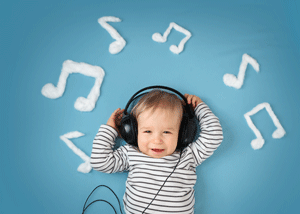Protect children's hearing — when in doubt, turn it down
Almost 50 million Americans have hearing loss. And hearing loss does not just affect elderly people — 65 percent of people with hearing loss are younger than age 65.
More than half of the people with hearing loss suffered the damage outside the workplace according to the Centers for Disease Control and Prevention. It could be from everyday exposure to leaf blowers, sirens, rock concerts and other loud sounds.
Today, we have a headphone generation. Everywhere you look you see kids with headphones and portable devices. Many kids like to turn up the volume when listening to music, but this can cause permanent ear damage when doing so with a pair of headphones. If someone else can hear music coming out of the headphones, then the music is too loud. If your child can hear you talking while wearing headphones, the volume is OK.
Persistent noise above 90 decibels can cause damage. How loud is 90 decibels? A blow-dryer, kitchen blender, food processor, lawnmower or a passing motorcycle.
Tips from the American Academy of Pediatrics to help protect hearing:
- Use earphones that do not seal off the ear from outside air. The ideal headphones fit softly on the ear or are disc-shaped and get placed on the outer ear. Those that fit tightly around or in the ears are the worst, but also are the most popular because of their higher sound quality.
- When in doubt, turn it down. Although volume levels vary from player to player, anything above 80 to 85 decibels poses a real risk of injury to the ear. An easy rule of thumb is to turn the volume low enough so that normal conversation can still be heard.
- Pay attention to changes in noise levels while using the device. Sound levels also vary from song to song. If one song plays at a normal level and the next is much louder, turn it down.
If your child is at a loud event or riding on a loud vehicle, use hearing protectors. And, remember to be a good role model by protecting your own hearing.
